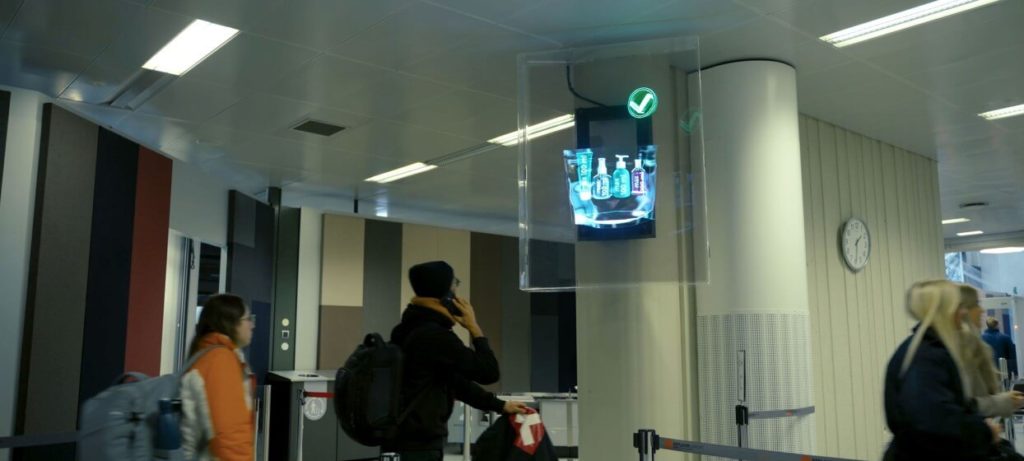
HYPERVSN 3D Catalog
USD 1,200
Qty

HYPERVSN 3D Catalog
USD 1,200
Qty

HYPERVSN 3D Catalog
USD 1,200
Qty
Cart Subtotal:
USD 3,600

HYPERVSN
Marketing Department
Many solutions in the travel tech space—including holographic avatars—are often marketed through the lens of passenger convenience and “wow-factor” appeal. And while that certainly creates memorable moments for travelers, the real breakthrough and scalable profitability comes when we address the core business pains of the airport itself.
Airports today are navigating a complex landscape of labor shortages, rising operational costs, and increasing expectations from both airlines and regulators. Technology that simply delights is no longer enough. Solutions must deliver measurable impact on the airport’s bottom line.
So what are the 3–5 critical challenges airports face that a holographic avatar can actually help solve? Here is a breakdown of high-priority pain points and how immersive AI technology can provide tangible, scalable relief—with supporting research and examples.
Across Europe and beyond, airports are struggling to maintain adequate staffing levels. Frontline staff for navigation support, information desks, and multilingual service are particularly hard to retain. The post-COVID rebound has only intensified the gap between passenger volume and personnel capacity.
▶ According to ACI Europe (2023), 68% of European airports reported operational staff shortages, leading to bottlenecks, delays, and reliance on expensive overtime pay. McKinsey (2023) adds that many airports are still facing negative margins due to inflated labor costs despite traffic recovery.
How avatars help:
The avatar becomes an always-on frontliner that bridges human gaps while reducing reliance on fluctuating staff pools.
Airports generate up to 50% of their income from non-aeronautical revenue streams like retail, F&B, and duty-free. But when passengers are stressed or confused, their spending drops sharply.
▶ A SITA survey (2022) found that 74% of travelers struggle with wayfinding in large terminals, and research by ACI World shows that stressed passengers spend 2.2x less in retail zones.
How avatars help:
Think of the avatar as a revenue-enabling guide—getting passengers where they need to be faster so they can spend more.
Not all passengers speak English or local languages, and airports struggle to maintain native-level service in less common tongues. This gap creates friction, confusion, and even missed flights.
▶ IATA’s Global Passenger Survey (2023) highlights that 49% of non-native travelers feel underserved by airport communication. With global travel patterns diversifying, inclusive service is not a nice-to-have—it is a competitive edge.
How avatars help:
This transforms the avatar into a universal assistant, able to flex across demographics and cultural contexts.
Passenger satisfaction metrics are more than vanity scores—they impact airline partnerships, hub rankings, and investor interest. But with rising traffic and shrinking staff, delivering a consistent 5-star experience is tough.
▶ According to ACI World (2022), airports that deployed digital self-service tech saw an average NPS improvement of +11 points. In Istanbul, the rollout of virtual assistants led to a spike in navigation satisfaction scores from 7.2 to 8.5 in under six months (ITU Report).
How avatars help:
For airport executives, it is not just about tech for tech’s sake—it is about metrics that move the needle.
Maintaining consistent service quality across terminals and shifts is expensive and time-consuming. Staff turnover means ongoing onboarding, QA, and script adherence monitoring.
▶ Deloitte research confirms that AI-powered agents in public-facing roles can cut training and re-training costs by up to 65%, while ensuring uniform messaging.
How avatars help:
One avatar update = consistent rollout across 5 or 50 terminals.
The true ROI of a holographic avatar is not just in engagement or entertainment—it is in labor efficiency, revenue recovery, multilingual scale, and satisfaction metrics that directly influence how airports grow and perform.
When we shift the narrative from “wow-factor” to “cost-saver, revenue-driver, and satisfaction amplifier,” the decision-makers listen. That is when innovation becomes investment.
Sources:


subscribe

USD 1,200
Qty

USD 1,200
Qty

USD 1,200
Qty
Cart Subtotal:
USD 3,600☎️